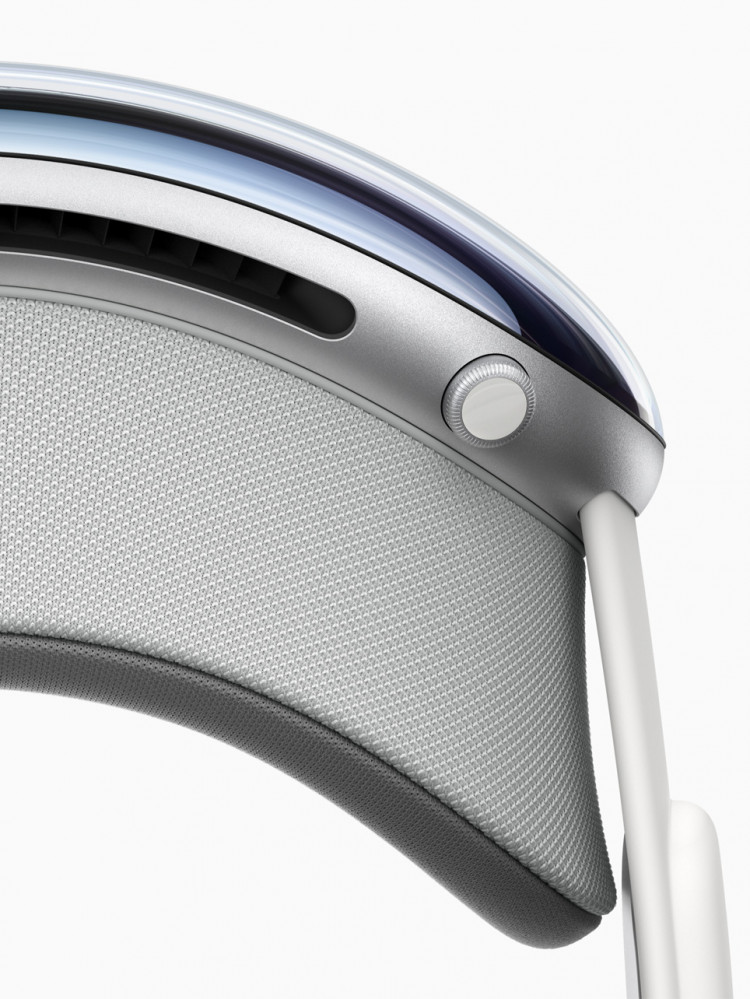Following the release of its $3,499 Vision Pro, Apple is reportedly looking into launching a more affordable version of its mixed reality (MR) headset.
According to a report by Bloomberg's chief correspondent Mark Gurman on Sunday, Apple is studying a cheaper MR headset which might be named either "Vision" or "Vision One" in line with the Vision Pro. The release of this product could be in 2026, but potentially could be announced as early as the end of 2025.
After the launch of the Vision Pro last week, the device's hefty price tag of $3,499 ignited widespread discussion in the market. Analysts have noted that other industry leader Meta offers much better value for money in the AR sector, with its Meta Quest 2 priced at $299 and the subsequent Meta Quest 3 selling for just $499.
However, Gurman noted that the $3,499 price of Apple's Vision Pro is at or near the manufacturing cost. Hence, to introduce a cheaper device, cuts would have to be made across the board.
For instance, Apple may opt for fewer cameras, iPhone-grade or older Mac chips, and lower-quality screens as compared to the three most expensive components of the Vision Pro - the camera and sensor array, dual Apple chips, and dual 4k micro OLED virtual reality displays.
On another front, the downgraded version may also feature a simpler headband design, forgo speakers in favor of using AirPods for audio playback, replace automatic IPD (interpupillary distance) adjustment with physical adjustment, and even eliminate features like the 3D camera.
With all these factors, combined with refined production processes, economies of scale, and a cheaper framework, Gurman believes that Apple can reduce the headset price by "several hundred dollars."
Moreover, Gurman stated that the second generation of Vision Pro is under development and equipped with a faster processor. This suggests that Apple intends to adopt a dual-product strategy for the MR headset category, similar to its iPhone series.
However, for Apple, creating a more affordable version is a challenge.
Forbes commentator David Phelan pointed out that it's not unusual for Apple to plan a roadmap for its newest products for years ahead. Still, it usually involves an "upward" path: releasing the lowest-priced version first, followed by a higher-priced "Pro" version.
Therefore, the possibility of Apple releasing a cheaper, downgraded version after launching the Vision Pro first remains in question.
Moreover, in terms of Gurman's speculations about the downgraded version, Phelan believes that eliminating the headband speakers is plausible, but Apple is unlikely to resort to a "lower quality screen".
The screen is one of the main selling points of Vision Pro, and it is doubtful that Apple would compromise on this.
Removal of the 3D camera is also unlikely, as it is a "natural by-product" of the dual-camera design.
Therefore, Phelan agrees with Gurman's assertion that the "$3,499 price is at or near the manufacturing cost", which poses a considerable challenge for downgrading.
However, Phelan diverges from Gurman in that he believes Apple, if it wishes to produce a cheaper, more accessible headset, will focus on economies of scale rather than lowering component quality.
Furthermore, even if the price of the simplified headset could be "reduced by several hundred dollars," as Gurman suggests, it is still a high price. This stands in stark contrast to the lowest-priced iPhone SE, which is nearly an affordable option compared to the iPhone Pro models.
Regardless, Phelan concedes that regardless of the speculation about a downgraded version, it is clear that Apple





